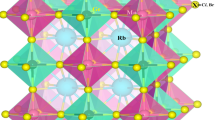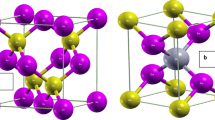Abstract
We use the third nearest tight binding model to investigate the thermo-electric properties of (N,0) zigzag Silicene nanotubes (ZN-SiNTs) for β [n = 3s0 + 1] and γ [n = 3s0 + 1] types with integer number s0. We validated our tight binding model by density functional theory (DFT) data. The Green function approach is employed to investigate the thermal properties of the ZN-SiNTs. Our calculations indicate that ZN-SiNTs have a direct band gap, which decreases with diameter. For the constant diameter, the thermal properties increase with the temperature, because the thermal energy of charge carriers increases with temperature. Larger diameter SiNTs have higher thermal properties due to the smaller band gap. The γ-type SiNTs have higher thermal intensities as compared to the β-type, because based on smaller band gap, their charge carriers need more thermal energy to excitation to conduction bands. By comparing the thermal properties of (N,0) armchair Silicene nanoribbons (AN-SiNRs) and ZN-SiNTs, we found that the thermal properties ZN-SiNT is smaller than that of the AN-SiNR with corresponding N.
Similar content being viewed by others
Data Availability
The data that support the findings of this study are available on request from the corresponding author.
References
Iijima S, Ichihashi T (1993)Single-shell carbon nanotubes of 1-nm diameter. Nature 363(6430):603–605
Dresselhaus MDG, Saito R (1998) Physical properties of carbon nanotubes
Saito R et al (1992)Electronic-structure of chiral graphene tubules. Appl Phys Lett 60:2204–2206
Jiang J et al (2004) Optical absorption matrix elements in single-wall carbon nanotubes. Carbon 42(15):3169–3176
Bengu E, Marks LD (2001)Single-walled BN nanostructures. Phys Rev Lett 86(11):2385–2387
Alfieri G, Kimoto T (2010) Engineering the band gap of SiC nanotubes with a transverse electric field. Appl Phys Lett 97(4):043108
Chowdhury S, Jana D (2016) A theoretical review on electronic, magnetic and optical properties of silicene. Rep Prog Phys 79(12):126501
Castrucci P et al (2006) Silicon nanotubes: Synthesis and characterization. Thin Solid Films 508(1):226–230
De Crescenzi M et al (2005) Experimental imaging of silicon nanotubes. Appl Phys Lett 86(23):231901
Sha J et al (2002) Silicon nanotubes. Adv Mater 14(17):1219–1221
Chegel R, Hasani M (2020) Electronic and thermal properties of silicene nanoribbons: Third nearest neighbor tight binding approximation. Chem Phys Lett 761:138061
Jahan N, Navid IA, Subrina S (2018)Thermal Conductivity of Silicene Nanoribbons: An Equilibrium Molecular Dynamics Study. In: (2018) IEEE International WIE Conference on Electrical and Computer Engineering (WIECON-ECE). IEEE, New York
Pan L et al (2012) Thermoelectric properties of armchair and zigzag silicene nanoribbons. Phys Chem Chem Phys 14(39):13588–13593
Sadeghi H, Sangtarash S, Lambert CJ (2015) Enhanced thermoelectric efficiency of porous silicene nanoribbons. Sci Rep 5:9514
Chen J, Zhang G, Li B (2011) A universal gauge for thermal conductivity of silicon nanowires with different cross sectional geometries. J Chem Phys 135(20):204705
Lee J et al (2016) Thermal Transport in Silicon Nanowires at High Temperature up to 700 K. Nano Lett 16(7):4133–4140
Li D et al (2003) Thermal conductivity of individual silicon nanowires. Appl Phys Lett 83(14):2934–2936
Weisse JM et al (2012) Thermal conductivity in porous silicon nanowire arrays. Nanoscale Res Lett 7(1):554
Durgun E, Tongay S, Ciraci S (2005) Silicon and III-V compound nanotubes: Structural and electronic properties. Phys Rev B 72(7):075420
Yang X, Ni J (2005) Electronic properties of single-walled silicon nanotubes compared to carbon nanotubes. Phys Rev B 72(19):195426
Tong J, Zhang M, Lei Y (2020) Effect of dimension parameters on the optical properties of a single silicon nanotube. Optik 204:164164
Chegel R, Behzad S (2013) Bandstructure modulation for Si-h and Si-g nanotubes in a transverse electric field: Tight binding approach. Superlattices Microstruct 63:79–90
Guzmán-Verri GG, Lew Yan Voon LC (2007) Electronic structure of silicon-based nanostructures. Phys Rev B 76(7):075131
Tang YH et al (2005)Self-assembled silicon nanotubes under supercritically hydrothermal conditions. Phys Rev Lett 95(11):116102
Xie M et al (2008) Growth of p-type Si nanotubes by catalytic plasma treatments. Nanotechnology 19(36):365609
Epur R et al (2015) A simple and scalable approach to hollow silicon nanotube (h-SiNT) anode architectures of superior electrochemical stability and reversible capacity. J Mater Chem A 3(20):11117–11129
Fagan SB et al (2000) Ab initio calculations for a hypothetical material: Silicon nanotubes. Phys Rev B 61(15):9994–9996
Fagan SB et al (2001) Stability investigation and thermal behavior of a hypothetical silicon nanotube. J Mol Struct (Thoechem) 539(1):101–106
Jeong H et al (2014) Enhanced light absorption of silicon nanotube arrays for organic/inorganic hybrid solar cells. Adv Mater 26(21):3445–3450
Li K, Wang W, Cao D (2011) Novel chemical sensor for CO and NO: silicon nanotube. J Phys Chem C 115(24):12015–12022
Kulish VV et al (2013) Enhanced Li adsorption and diffusion in single-walled silicon nanotubes: An ab initio study. Chemphyschem 14(6):1161–1167
He T et al (2008)First-principles study of Co-doped single-walled silicon nanotubes. Nanotechnology 19(20):205707
Singh AK et al (2003) Magnetism in transition-metal-doped silicon nanotubes. Phys Rev Lett 91(14):146802
Khalkhali M, Khoeini F, Rajabpour A (2019) Thermal transport in silicene nanotubes: Effects of length, grain boundary and strain. Int J Heat Mass Transf 134:503–510
Lu P-X, Qu L-B, Cheng Q-H(2013) A comparison study on the electronic structures, lattice dynamics and thermoelectric properties of bulk silicon and silicon nanotubes. Chin Phys B 22(11):117101
Chen J, Zhang G, Li B (2010) Remarkable reduction of thermal conductivity in silicon nanotubes. Nano Lett 10(10):3978–3983
Yu X, Li H, Zhou J (2020) Phonon thermal conductivity reduction in silicene nanotubes with isotope substitution. RSC Adv 10(18):10752–10757
Zhang T et al (2013) Significant reduction of thermal conductivity in silicon nanowire arrays. Nanotechnology 24(50):505718
Hochbaum AI et al (2008) Enhanced thermoelectric performance of rough silicon nanowires. Nature 451(7175):163–167
Paul A, Luisier M, Klimeck G (2011) Shape and orientation effects on the ballistic phonon thermal properties of ultra-scaled Si nanowires. J Appl Phys 110(11):114309
Markussen T, Jauho A-P, Brandbyge M (2008) Heat conductance is strongly anisotropic for pristine silicon nanowires. Nano Lett 8(11):3771–3775
Zhang Y et al (2007) Phonon spectrum and specific heat of silicon nanowires. J Appl Phys 102(10):104303
Marchbanks C, Wu Z (2015) Reduction of heat capacity and phonon group velocity in silicon nanowires. J Appl Phys 117(8):084305
Dubyk K et al (2020) Thermal properties study of silicon nanostructures by photoacoustic techniques. J Appl Phys 127(22):225101
Joura AV, Demchenko DO, Freericks JK (2004) Thermal transport in the Falicov-Kimball model on a Bethe lattice. Phys Rev B 69(16):165105
Bruus H, Flensberg K (2012)Many-body quantum theory in condensed matter physics: an introduction. Oxford Univ. Press, Oxford
Soler JM et al (2002) The SIESTA method forab initioorder-Nmaterials simulation. J Phys: Condens Matter 14(11):2745–2779
Wang C et al (2017) Band gap scaling laws in group IV nanotubes. Nanotechnology 28(11):115202
Author information
Authors and Affiliations
Contributions
R. Chegel carried out the idea and performed the tight binding and DFT calculations with finding the hopping parameters. All authors wrote the original article.
Corresponding author
Ethics declarations
The authors declare that they have no known competing financial interests or personal relationships that could have appeared to influence the work reported in this paper.
Ethics Declarations
This manuscript is the authors’ original work and has not been published nor has it been submitted simultaneously elsewhere.
Conflict of Interest of Interests
There are no conflicts of interest.
Consent to Participate
The consent was obtained from individual or guardian participants.
Consent for Publication
That all authors have checked the manuscript and have agreed to the submission.
Additional information
Publisher’s Note
Springer Nature remains neutral with regard to jurisdictional claims in published maps and institutional affiliations.
Rights and permissions
About this article
Cite this article
Aghaiimanesh, Z., Chegel, R. & Ghobadi, N. Thermal Conductivity and Heat Capacity of Silicene Nanotube Compared to Silicene Nanoribbon. Silicon 14, 5617–5628 (2022). https://doi.org/10.1007/s12633-021-01324-9
Received:
Accepted:
Published:
Issue Date:
DOI: https://doi.org/10.1007/s12633-021-01324-9




